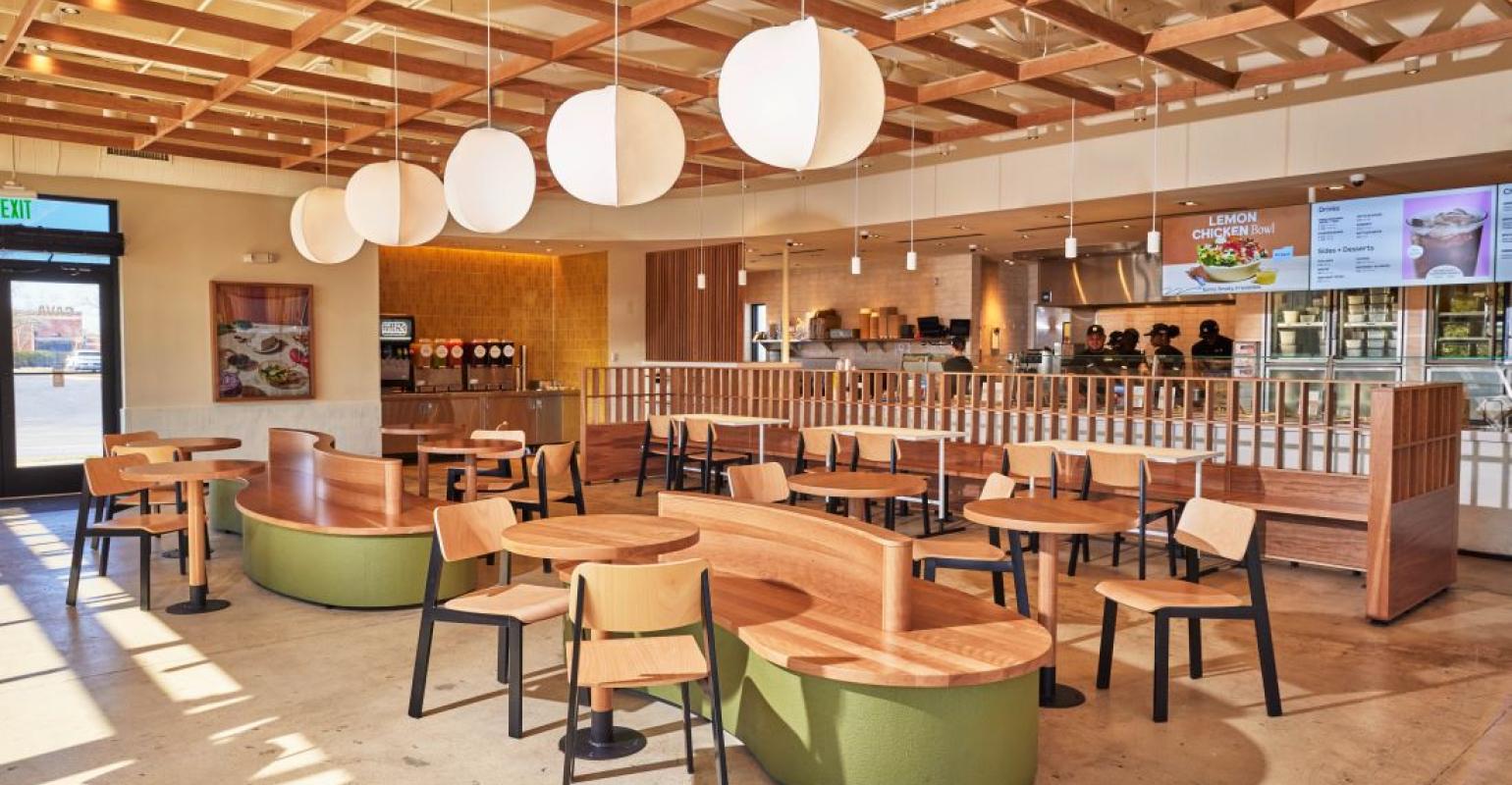
Those who have been in this industry long enough know that the pendulum is always swinging. We’ve been through value wars before, and bankruptcy waves, and casual dining retrenchment. But the pandemic kicked that pendulum into overdrive with some trends swinging at a dizzying pace.
One such example is the adoption of digital-only, or digital-forward, prototypes. With the staggering (and necessary) increase in digital orders, these models make plenty of sense. That said, their swift adoption may have pushed the industry to become too transactional, according to some customers. We are in the business of hospitality, after all.
A few brands are now striving to find a sweet spot between convenience and warm service. Subway is one of them, last week introducing its Fresh Forward 2.0 prototype created to improve both ambiance and convenience. The design, which will roll out systemwide in 2025, features vibrant décor elements, including bold wall graphics, localized messages and signage, elevated lighting, and warmer wood tones. The company said the prototype’s concept test led to “significant increases” in customers’ likelihood to dine in and visit again.
“When Subway first launched Fresh Forward, it was more than just a remodel — it was a complete refresh and a competitive necessity for attracting guests and building pride among our restaurant teams,” chief development officer Mike Kehoe said in a statement. “Fresh Forward 2.0 is an exciting evolution of the design, ensuring we continue to future proof our business and deliver on our brand promises of experience and convenience for both our guests and franchisees.”
CAVA is also prioritizing more connection with dine-in guests and doing so through its Project Soul initiative, which includes softer seating, more greenery, and an inviting brand palette. As chief executive officer Brett Schulman noted on the company’s earnings call earlier this month, “The demise of the dining room is greatly exaggerated.”
He believes restaurant customers have a desire for more human connections and CAVA is working to meet that demand both in-store and digitally.
“As technology and automation infiltrate everyday life and the front lines of more concepts, consumer touchpoints are becoming increasingly transactional, removing the joy [and] humanity from the experience,” he said. “We believe technology should enhance, not replace, the human experience and we’re leveraging it to create warm, personal moments across our physical and digital channels and to support our team members in engaging and connecting with our guests.”
As CAVA works on this objective, its brand appeal continues to grow, Schulman added.
This is exactly what Brian Niccol is striving to achieve in his early days as CEO of Starbucks. When he was named to that position in August, he said the chain had drifted from its core — coffee, connection, and joy — and had become too “transactional, inconsistent, and hectic.” To fix this, one of his first priorities is “re-establishing Starbucks as the community coffeehouse,” with comfortable seating and thoughtful design.
During his first earnings call with the coffee chain in late October, Niccol said “more personal touches” will be reintroduced in the coming months to elevate the café experience. An example is coffee served in ceramic mugs for customers who stay on the premises.
“We’re also beginning to review and revise our cafe designs to bring back more comfortable seating and amenities and to ensure our stores are a place where customers want to sit, work, and meet,” he said.
Starbucks is also examining some of its policies to ensure customers and employees stay top of mind.
“We going to be piloting some new approaches on how we set up the labor model so that our baristas have time to give not only great craft drinks, but also that hospitality and that human touch of handing off the drink to our customer at the counter and, also, making sure that we’re on time with the mobile order business. The other thing (employees) shared with me in some of the stores is they wanted their café dining room back. They like leading the coffee house,” Niccol said.
This shift back to hospitality comes as about half of American adults report experiencing loneliness, and 70% of consumers aged 15 to 24 have less social interaction with their friends versus two decades ago.
“Over the last two decades, as the world interacts more often with screens than people, we’ve lost 24 hours a month in personal connection,” Schulman said.
During CREATE: The Event for Emerging Restaurateurs last month in Nashville, Nick Stone, founder of Bluestone Lane coffee, said the restaurant industry is uniquely positioned to drive more community and friendships in response to this trend.
“I hope we talk more about how restaurants are the antidote to the loneliness epidemic,” he said.






